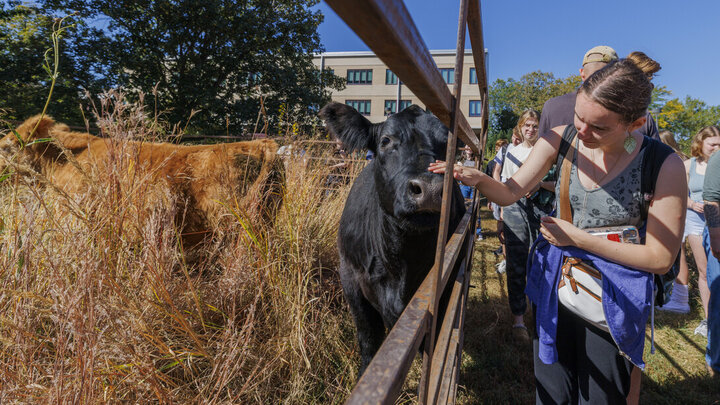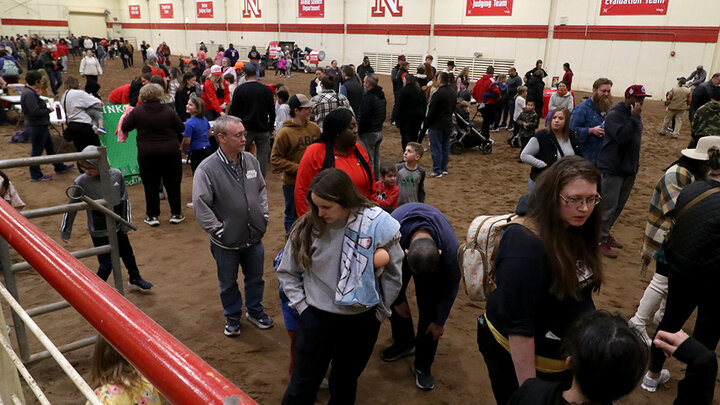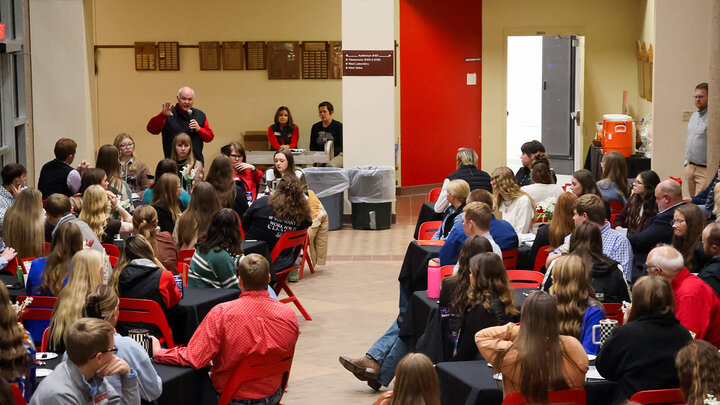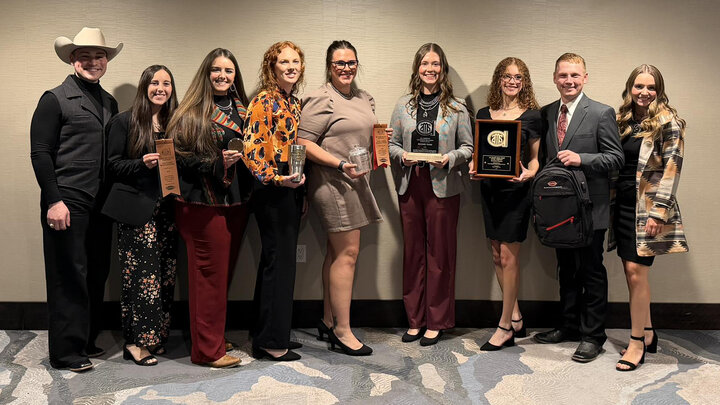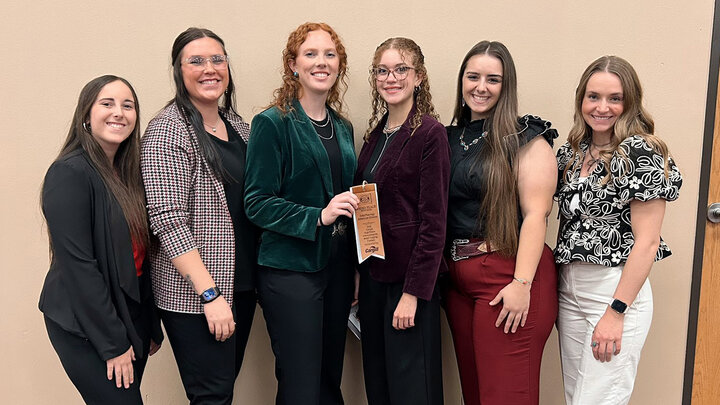University of Nebraska–Lincoln students caught a small glimpse of East Campus' past Sept. 30 when a live grazing demonstration was held on a small section of prairie on the southwest corner of campus.
The demonstration was conducted on a small portion of the 1/4-acre tall grass prairie outside of Hardin Hall. The prairie plot was planted in 2021 by David Wedin, director of Nebraska’s Center for Grassland Studies, and colleagues in the School of Natural Resources. The steers for the demonstration were provided by the Department of Animal Science.
The East Campus area was originally acquired by the university in the 1870s to be used as an experimental farm. Known then as “farm campus,” students performed work on campus to receive a hands-on learning experience similar to the experiential learning model used by the College of Agricultural Sciences and Natural Resources today.
Attendees, including Lindsey Chizinski’s Principles of Ecology class, discussed grazing, ruminant nutrition and grassland ecology with faculty, staff and graduate students from Animal Science, Grassland Systems, and Agronomy and Horticulture.
Keegan Dunn, a junior integrated science major, was interested in the discussion on how adaptive grassland management can vary from year to year based on the goals.
“Getting outside and having the opportunity to ask questions about what we’re seeing is so beneficial," Dunn said. "Everyone learns in different ways, and activities like this help take what you discussed in the classroom and show how it applies in real-world situations.”
While students would otherwise have to travel to see range management practices take place, the on-campus demonstration allowed students to further their education right outside of their normal classroom.
“Why stay inside when we could step outdoors to observe ecological interactions?" Chizinski said. "It’s hard to ignore cattle grazing a prairie in the middle of the city."
Rangeland management is an important practice in the state, as the Nebraska Sandhills, the largest sand dune formation in the Western Hemisphere and one of the largest grass-stabilized dune regions in the world, consists of about 19,300 square miles of sand dunes. About 95% of the Sandhills is defined as rangelands, which are areas where the native vegetation is predominantly grasses, grass-like plants, forbs or shrubs suitable for grazing or browsing use.
Management of these areas is needed to remove the natural buildup of biomass and thatch, and while natural maintenance is done by wildfires or grazing by native herbivores, modern practices consist of annual grazing, haying or prescribed burning. Cattle grazing sustains more than 22 million private acres of rangeland in Nebraska, both economically and ecologically.
"Grasslands have always been a part of this state, and our students may go on to work in state or federal agencies that will have some responsibility for managing our grasslands," Wedin said. "They need to know what large grazers do as another tool in their toolbox so that when it comes time for them to make management decisions, they are using the right tool to meet their needs."
